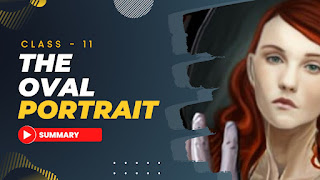Human Nervous and Glandular System: Class 10 Science Notes
Human Nervous and Glandular System Class 10 Science Complete Notes. This note include all the excercise given in Human Nervous and Glandular System chapter of science book such as question answer, numericals, give reason, diagrammatic questions and define the following. This note is published for helping students to solve their problems.
If you find any mistakes or feel like giving any suggestions then feel free to comment down.
Related Searches
- Nervous system parts and functions
- Nervous System notes PowerPoint
- Nervous system Notes Anatomy and Physiology
- What is glandular system class 10
- Nervous system Notes anatomy and physiology pdf
- How is nervous system connected to glandular system?
- How does human nervous system work explain Class 10?
- What is glandular system in short?
Human Nervous and Glandular System
📚EXERCISES
2. Answer the following questions.
a. Define the terms stimulation and reaction with suitable examples.
Ans: The change in the environment which induces a change in the organism is called stimulation.
The response of the organism to the stimulus is called reaction. For example: A rabbit gets scared. So it runs away. Here, getting scared is stimulus and running away is response.
b. Why do animals response more quickly than plants.
Ans: Animals response more quickly than plants because in animals there is a presence of a well developed nervous system and endocrine system
c. What is nervous system ? Write in short about the spinal cord.
Ans: The system that receives the stimulus and transmits it to the other parts of the body by the means of impulses which shows the corresponding effect is known as nervous system.
The spinal cord is a long, soft and white jelly like substance present in the neural canal of vertebral column. It extends from the lower end of medulla oblongata to lumbar vertebra.
d. Name the cavity where the brain is located. What are the three meninges of the brain?
Ans: The brain is located in cranial cavity. The three meninges of the brain are dura mater, arachnoid mater and piamater.
e. Where does the medula oblongata arise from?
Ans: The medulla oblongata arise from the bottom of the brain.
f. Write any two functions of the following Organs?
Ans: The functions of the given organs are given below:
- It controls the function of other parts of the brain
- It is the centre of intelligence, memory, emotion etc
- It makes the body movements smooth and steady
- It maintains equilibrium and control body posture
- It receives and integrates signal from the spinal cord and send the resulting impulses to the cerebrum and cerebellum
- It contains different centres that regulates heart beat rate, blood pressure, breathing etc
g. Describe the structure of neuron with a neat and labelled diagram.
 |
| Source : Byju's |
Ans: The cell that transmits the message from one part of the body to the other parts are known as neurons. A neuron consists of three major parts; the cell body, the axon and the dendrites. The cell body is round in shape and it is the centre of receiving and sending nerve impulses.
h. What is Spinal Cord? Describe the reflex action clearly with example.
Ans: Spinal Cord is a long, soft and white jelly like substance present in the neural canal of the vertebral column. Reflex action is defined as the an involuntary action performed by muscles under the direction of the Spinal cord in response to the stimulus. For exexample; if we accidently step on some sharp object such as pin, we withdrawl our legs very quickly without thinking what to do. This is the reflex action.
i. Explain the meaning of the term reflex arc.
Ans: The route taken by nerve impulses from the receptors to the effectors during involuntary action is called reflex arc.
j. Write the major function of sympathetic and parasympathetic autonomic nervous system.
Ans: The function of sympathetic autonomic nervous system is to activate the fight or flight response during a threat or perceived danger and the function of Parasympathetic autonomic nervous system is to restore the body to a state of calm.
k. Where is pituitary gland located? List it's various secretions What are the effects of hyposecreation of growth hormone?
Ans: Pituitary gland is located in the depression of the sphenoid bone in the skull.
The secreations of pituitary gland are as follows:
- Growth hormone
- Thyroid stimulating hormone
- Antidiuretic hormone
- Follicles stimulating hormone
- Adrenocorticotropic hormone
The effect of hyposecreation of growth hormone is Dwarfism (growth retardation).
l. Where is the thyroid gland situated? Name the disease which is caused by the deficiency of iodine in diet.
Ans: Thyroid gland is situated in the neck, one on the either side of the upper part of the trachea. The disease caused by the deficiency of iodine is goitre, increase in size of thyroid gland.
m. Why is the pancreas called heterocrine gland? List the functions of insulin and glucagon.
Ans: Pancreas is called a heterocrine gland because it secreations i.e Pancreatic juice is transported to duodenum through a duct and insulin is transported through blood.
The function of insulin is to decrease glucose level in the blood and the function of glucagon is to increase the sugar content of the blood.
3. Differentiate Between:
a. Dendrites and axon
Ans: The differences between Dendrites and axon follows:
| Dendrites | Axon |
|---|---|
| It is the short and thin branched extension of a nerve cell | It is the long tube like structure of nerve cell |
| A nerve cell has dendrites | A nerve cell has only one axon |
| It is branched all along | It is branched at their ends |
| They carry impulses towards the cell body | They carry impulses away from cell body |
b. Sensory and Motor nerves
Ans: The differences between sensory and motor nerves are as follows:
| Sensory Nerves | Motor Nerves |
|---|---|
| They carry impulses from various parts of the body to the brain or to the spinal cord | They carry impulses from brain or spinal cord to various part of the body |
| It is also called Afferent nerves | It is also called Efferent nerves |
c. Cerebrum and cerebellum
Ans: The differences between cerebrum and cerebellum are as follows:
| Cerebrum | Cerebellum |
|---|---|
| It is bigger in size than cerebellum | It is smaller in size than cerebrum |
| It controls all the voluntary action of the body | It maintains posture and balance of the body |
| It is located at the upper most part of the brain | It is located just below the cerebrum |
| It is a part of the forebrain | It is the part of hindbrain |
d. Endocrine and Exocrine glands
Ans: The differences between endocrine and exocrine glands are as follows:
| Endocrine Gland | Exocrine Gland |
|---|---|
| They are ductless glands | They are ducted glands |
| They secrete hormones | They secrets juice like mucus tear, saliva etc |
| Consumption of their secreations is less in amount | Consumption of their secreations is more in amount |
| Their secreation responsible are responsible for the control and coordination of growth | Their secreation are related to life process like respiration, digestion etc |
e. Spinal cord and brain
Ans: The differences between Spinal Cord and brain are as follows:
| Spinal Cord | Brain |
|---|---|
| It lies in neural canal of vertebral column | It lies in cranium which protects it from injury |
| It performs reflex actions | It serves as the centre for thinking, sensing etc |
| It returns sensory signals from body parts to the brain | It processes sensory information that comes from body parts |
| It has grey matter at the core and white matter on the outside | It has white matter at the core and grey matter on the outside |
f. Sympathetic and parasympathetic ANS.
Ans: The differences between sympathetic ANS and Parasympathetic ANS are as follows:
| Sympathetic ANS | Parasympathetic ANS |
|---|---|
| It activate the fight or flight response during a threat | It restore the body to a state of calm |
| It enhances all involuntary functions | It retards all involuntary functions |
4. Give Reason:
a. The pituitary gland is called the master gland.
Ans: The pituitary gland is called the master gland because it secrets stimulatory hormones which controls the function of other glands.
b. Hormones are called chemical messengers.
Ans: Hormones are called chemical messengers because they are the chemicals of endocrine and heterocrine glands which control and coordinate growth and developpent at different places.
c. The pancreas is a mixed gland.
Ans: The Pancreas is a mixed gland because it secretes pancreatic juice which is transported to duodenum through a duct and insulin through blood.
d. Cerebrum has it's upper surface grey but the upper surface of the spinal cord is white.
Ans: Cerebrum has its upper surface grey but the surface of the spinal cord is white because the grey matter is made up of cell bodies of neurons whereas the white matter is made up of axons. The nerve impulses are carried from the spinal cord towards the brain and message from brain is carried towards spinal cord.
e. The adrenal gland is also called an emergency gland.
Ans: The adrenal gland is also called an emergency gland because it secrets a hormone called adrenalin that prepares a body to face emergency conditions of emotional stress like fall in blood pressure, pain, fear etc.
f. A Persons jumps up when he/she steps on a loose things unknowingly.
Ans: A person jumps up when he/she steps on a soft loose things unknowingly because in this type of condition spinal cord takes decision and helps to perform the reflex action inorder to prevent our body from injuries.
g. A hanging person meets instant death.
Ans: A hanging person meets instant death because it cause a crack in medulla oblongata due to which it stops functioning. And we know that any kind of damage or injury in medulla oblongata cause instantaneous death.
5. Diagrammatic questions
Answer the following questions on the basis of the given diagram.
 |
| Source : Grade 10 Science Book |
a. Name A, D and F.
Ans: Names of parts A, D and F are given below:
A = Pituitary gland
D = Pancreas
F = Testes
b. Write the functions of B, C and E.
Ans: The functions of B, C and E are given below :
B = It controls general metabolism
C = It secret a hormone called adrenalin that prepares the body to face emergency condition
E = It produces mature ova and secret the female sex hormone
c. What are the secretions of D? Also write the function of the secretions?
Ans: Here, D secrets two types of hormones called insulin and glucagon.
Insulin controls the glucose level in blood and glucagon increases the sugar contained in the blood.
d. What is the effect of the hypersecretion of B?
Ans: The hypersecretion of B cause increase in pulse rate and increase in rate of metabolism.
e. Which glands are inside B?
Ans: Parathyroid gland and thyroid gland are inside B.
If class 10 Human Nervous & Glandular System Notes were helpful to you then feel free to share this notes with your friends & classmates.








17 18 19 ko pani haldenu na biology ko... with diagramatice study plz as fast as possible
Thank you so much this really helped a lot❤️
ok same